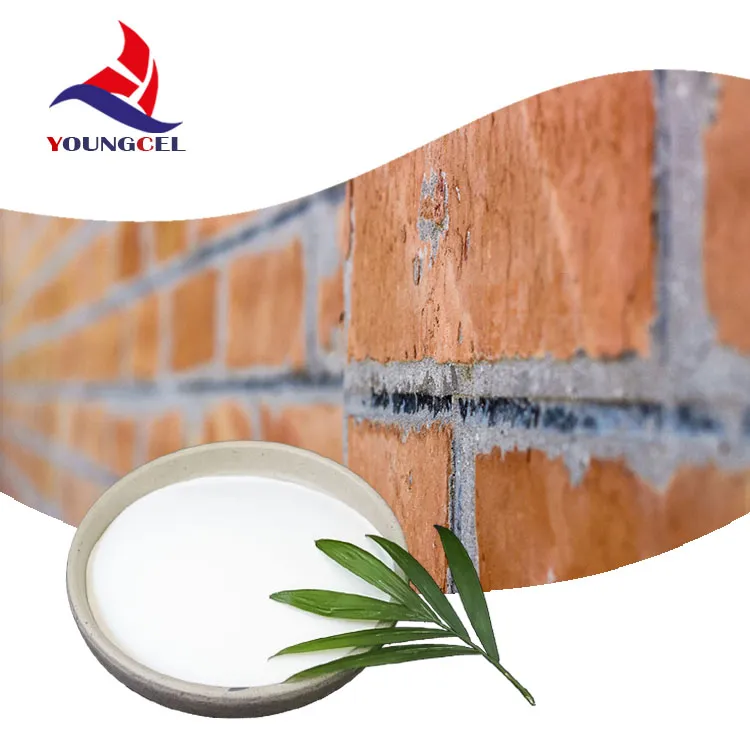The Importance of HPMC in Construction A Comprehensive Overview
Hydroxypropyl Methylcellulose (HPMC) is a versatile and essential polymer widely used in various industries, particularly in construction. Its unique properties make it a crucial component in formulations such as cement, gypsum, and tile adhesives, providing significant benefits that enhance the performance and durability of construction materials. This article explores the importance of HPMC in the construction industry, highlighting its benefits, applications, and the future trends surrounding its usage.
What is HPMC?
HPMC is a semi-synthetic polymer derived from cellulose, a natural polymer sourced from wood and plant fibers. It is modified to enhance its solubility in water and improve its physical properties. The chemical structure of HPMC consists of hydroxyl and methoxy groups, which contribute to its ability to form thick gels and act as a stabilizing agent in various formulations. Due to its unique characteristics, HPMC is widely recognized for its ability to improve the workability, adhesion, and overall performance of construction materials.
Benefits of HPMC in Construction
1. Improved Workability
One of the primary benefits of HPMC in construction is its ability to enhance the workability of mortars and plasters. When added to cementitious mixtures, HPMC increases the viscosity of the mixture, allowing for easier application and spreading. This characteristic is especially beneficial for construction projects that require precise application and uniform thickness.
2. Enhanced Adhesion
HPMC plays a critical role in improving the adhesion of tile adhesives and other bonding agents. Its chemical structure facilitates better interaction between the adhesive and the surfaces it is applied to, ensuring a stronger bond. This is particularly important in environments where temperature and humidity fluctuations can affect the performance of adhesives over time.
3. Water Retention
One of the key advantages of incorporating HPMC into construction materials is its excellent water retention properties. HPMC helps to retain moisture within the mixture, allowing for longer working times and reducing the risk of cracking due to rapid drying. This is particularly useful in hot and arid climates, where the evaporation of water can significantly affect the curing process.
4. Improved Durability
HPMC contributes to the overall durability of construction materials. By enhancing the cohesion and flexibility of mixtures, HPMC helps to prevent cracking and shrinkage as the materials cure. This results in longer-lasting construction solutions, reducing maintenance costs and extending the lifespan of structures.
Applications of HPMC in Construction
construction hpmc

HPMC is widely used in various applications within the construction industry, including
1. Tile Adhesives
Tile adhesives formulated with HPMC exhibit superior performance characteristics, including improved adhesion, workability, and water retention. This allows for easier tile installation and ensures that the tiles remain securely in place for an extended period.
2. Mortars and Plasters
In both dry-mix and wet-mix formulations, HPMC enhances the workability and finish of mortars and plasters. Its ability to retain water prevents premature drying, ensuring optimal curing and a smooth surface finish.
3. Self-Leveling Compounds
HPMC is commonly used in self-leveling floor compounds, where it aids in creating a smooth, level surface for further flooring applications. The inclusion of HPMC allows for better flow and spreading properties, leading to a more uniform application.
4. Concrete Admixtures
In concrete formulations, HPMC provides additional benefits such as improved workability, enhanced bonding, and increased resistance to shrinkage and cracking. This makes it an invaluable additive in modern concrete technology.
Future Trends
As the construction industry continues to evolve, the demand for eco-friendly and sustainable materials is on the rise. HPMC, being a cellulose-derived product, aligns with this trend. Researchers are exploring ways to improve the efficiency of HPMC production, reduce waste, and develop more sustainable versions of this polymer.
Additionally, ongoing advancements in nanotechnology and polymer science hold promise for developing new, high-performance formulations that incorporate HPMC. These innovations may lead to enhanced performance in extreme conditions and the creation of multifunctional construction materials.
Conclusion
In conclusion, Hydroxypropyl Methylcellulose (HPMC) is a vital component in the construction industry, offering numerous benefits that enhance the performance and durability of construction materials. Its unique properties contribute to improved workability, adhesion, water retention, and overall durability in various applications. As the construction industry moves towards sustainability, the future of HPMC in construction looks promising, with potential for innovative advancements that could further improve building practices worldwide.
-
The Application and Significance of Construction RdpNewsMay.19,2025
-
Industrial Grade HpmcNewsMay.19,2025
-
Building Coating Adhesive Building Coating Adhesive HpmcNewsMay.19,2025
-
Application Of Hpmc For Detergent For Detergent In DetergentsNewsMay.19,2025
-
Application Of Hpmc Cellulose In Cement-Based MaterialsNewsMay.19,2025
-
Application Of High Quality Hpmc For Construction In The Field Of ConstructionNewsMay.19,2025




